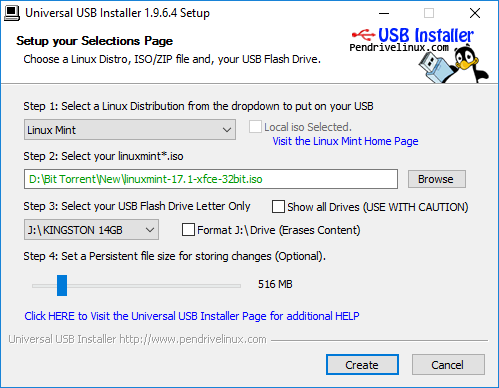

(Although of course this will only work if your hardware supports USB booting, and it's enabled in the BIOS, so you may want to confirm that if the system won't boot from your drive. If the selected live CD has a persistence option, where you're able to save files and settings, then you'll have the option to set aside some space on the USB drive for this purpose.Īnd finally, clicking Create will transfer the LiveCD files to your USB stick (overwriting any current contents), and make it bootable, ready for immediate use. (Choose the wrong drive here and it'll be overwritten, so be very, very careful.) Now point Universal USB Installer at your USB flash drive. Or, if you don't have it, use the program's built-in download link to grab a copy. Next, point Universal USB Installer to your distro's live CD ISO file. And there's a good selection of Linux-based utility discs, too: GParted, System Rescue CD and antivirus rescue CDs from AVG, Avira, BitDefender, F-Secure and Kaspersky, amongst others. All the usual candidates are included: Ubuntu, Linux Mint, Debian, Fedora, OpenSUSE, Puppy Linux variations and a whole lot more.

The process starts by simply choosing your preferred distribution from a list. If your USB drive doesnt show up, reformat it as FAT32. Fix out of range pointer error with Ubuntu 23.The Universal USB Installer is a tiny tool which makes it easy to copy a Linux live CD to a USB stick, so improving performance and making it possible to save files and settings. Run the file, select an ISO file or a distribution to download, select a target drive (USB drive or Hard Disk), select persistence if you wish, then reboot once done.



 0 kommentar(er)
0 kommentar(er)
